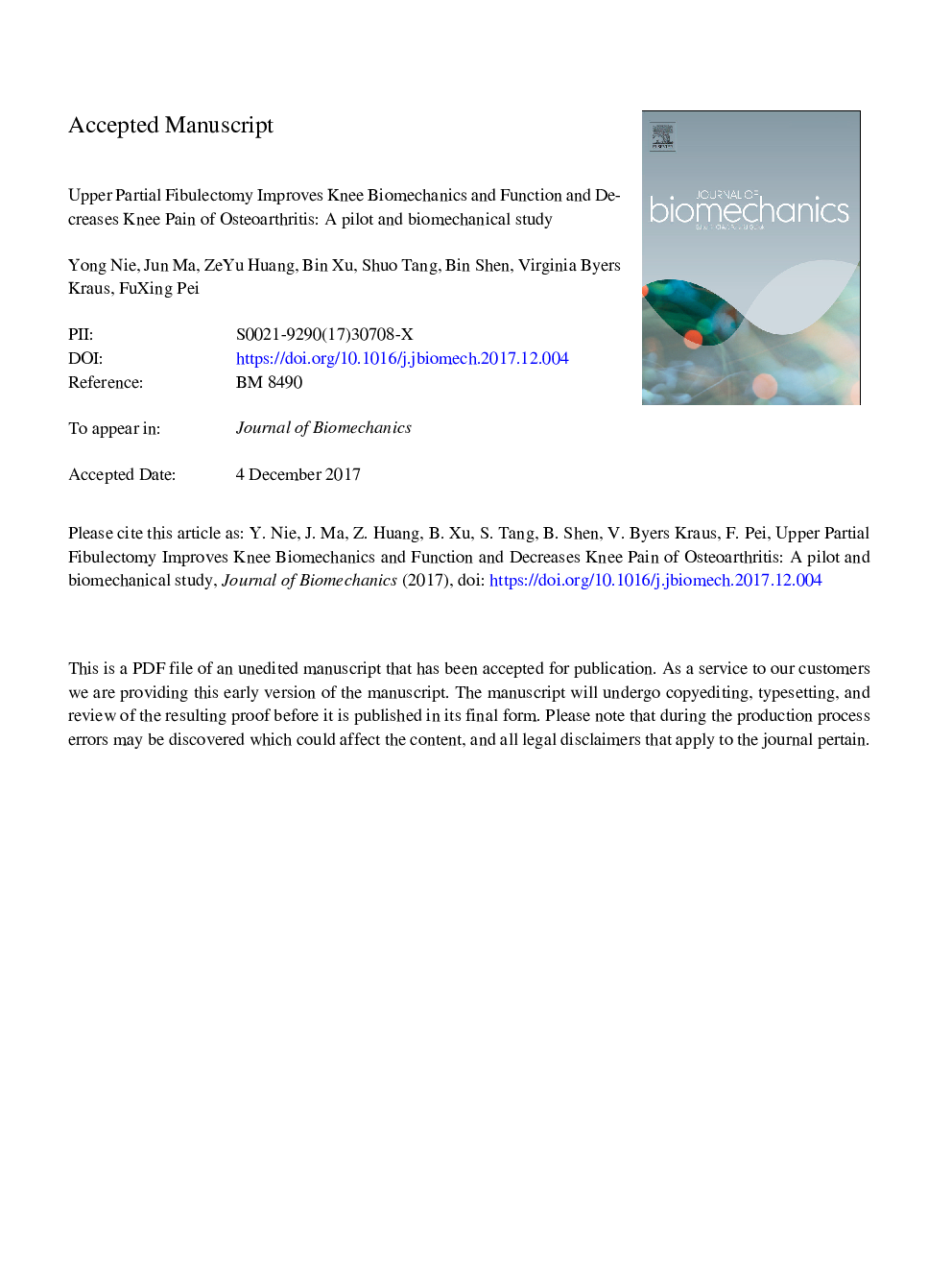| Article ID | Journal | Published Year | Pages | File Type |
|---|---|---|---|---|
| 7236393 | Journal of Biomechanics | 2018 | 32 Pages |
Abstract
To investigate the change in clinical outcomes and biomechanical properties of the knee in response to upper partial fibulectomy. Sixteen patients with medial compartment knee osteoarthritis (KOA) underwent upper partial fibulectomy. Visual analog scale (VAS) pain, the hospital for special surgery knee score (HSS), hip-knee-ankle (HKA) angle (measured in the frontal plane), and flexion/extension range of motion of the knee were assessed before and up to 6â¯months after surgery. Patients were evaluated for gait parameters and overall peak knee adduction moment (KAM). Patient-specific finite element knee models were developed to investigate changes in load in response to fibulectomy. Both VAS pain and HSS score were significantly improved (Pâ¯<â¯.001) one day after surgery and steadily improved during the subsequent 6â¯months. HKA angle improved (Pâ¯=â¯.006) immediately and remained stable by 3â¯months after surgery. A significant inverse relationship (Râ¯=â¯â0.528, Pâ¯=â¯.012) between the overall peak KAM (decreased by 19.1%) and the HKA (increased by 1.24° from a more varus to more neutral alignment) angle was observed. The minor load supported by the fibula preoperatively was spread post-operatively over the cortical bone of the tibial shaft. The mean stress in the medial tibial plateau was significantly decreased (Pâ¯<â¯.001), with a portion of the stress transferred to the posterior-lateral region of the tibial plateau after upper partial fibulectomy. This pilot study provides objective 3D gait and plausible biomechanical evidence for the improvement in clinical symptoms from partial upper fibulectomy.
Keywords
Related Topics
Physical Sciences and Engineering
Engineering
Biomedical Engineering
Authors
Yong Nie, Jun Ma, ZeYu Huang, Bin Xu, Shuo Tang, Bin Shen, Virginia Byers Kraus, FuXing Pei,
